Recently, the International Federation of Landscape Architects (IFLA) announced the list of winners for the 2023 IFLA Asia Pacific LA&Luminary Awards. The collaborative design team led by Wang Yun, Tang Xiaomin, Zhu Liqing, Zhang Yang, Chen Dan from the Department of Landscape Architecture, and Zhang Haiao from the Department of Architecture at School of Design, Shanghai Jiao Tong University, together with relevant design units, once again won 7 awards: 2 Awards of Excellence and 5 Honourable Mentions.
Award list
Awards of Excellence Wetland Park Design Based On Flood Resilience And Ecological Intelligence Ecological Restoration, Climate Resilience And Equitable Urban-Rural Development In Anshan Suburban Park From A Sustainability Perspective Honourable Mention The Revival of the Spirit of Place: The Environmental Renewal Design of the Huashan Road Entrance of Shanghai Jiao Tong University An Exploration of the Pattern of Landscape Planning for the Jiangnan (South of the Yangtze River Area) Water Network Area of China from a Multi-scale Perspective: Renewal Planning of a Landscape System in Jiangyin City, Jiangsu Province If Ever The Cloud Knows Emerald Necklace in the Lake Cluster - A Study on the Construction of the Fourth Ring Forest Belt and the Assessment and Renewal of Plant Communities in Wuhan City Sustainable Cultural Landscape Implementation Approach for the Living Room of a Coastal Water Town: Landscaping Design of CREC Century Shangcheng |
The Revival of the Spirit of Place: The Environmental Renewal Design of the Huashan Road Entrance of Shanghai Jiao Tong University
Cultural and Urban Landscape
Honourable Mention
Main participants from Shanghai Jiao Tong University:
Wang Yun, Tang Xiaomin, Chen Dan, Zhang Yang, Zhang Le, Lai Jiani, Lu Qi, Lin Song, Jiang Jiananyi, et al.
Design unit:
Shanghai Jiao Tong University and Shanghai EDGING A&LA Co., Ltd

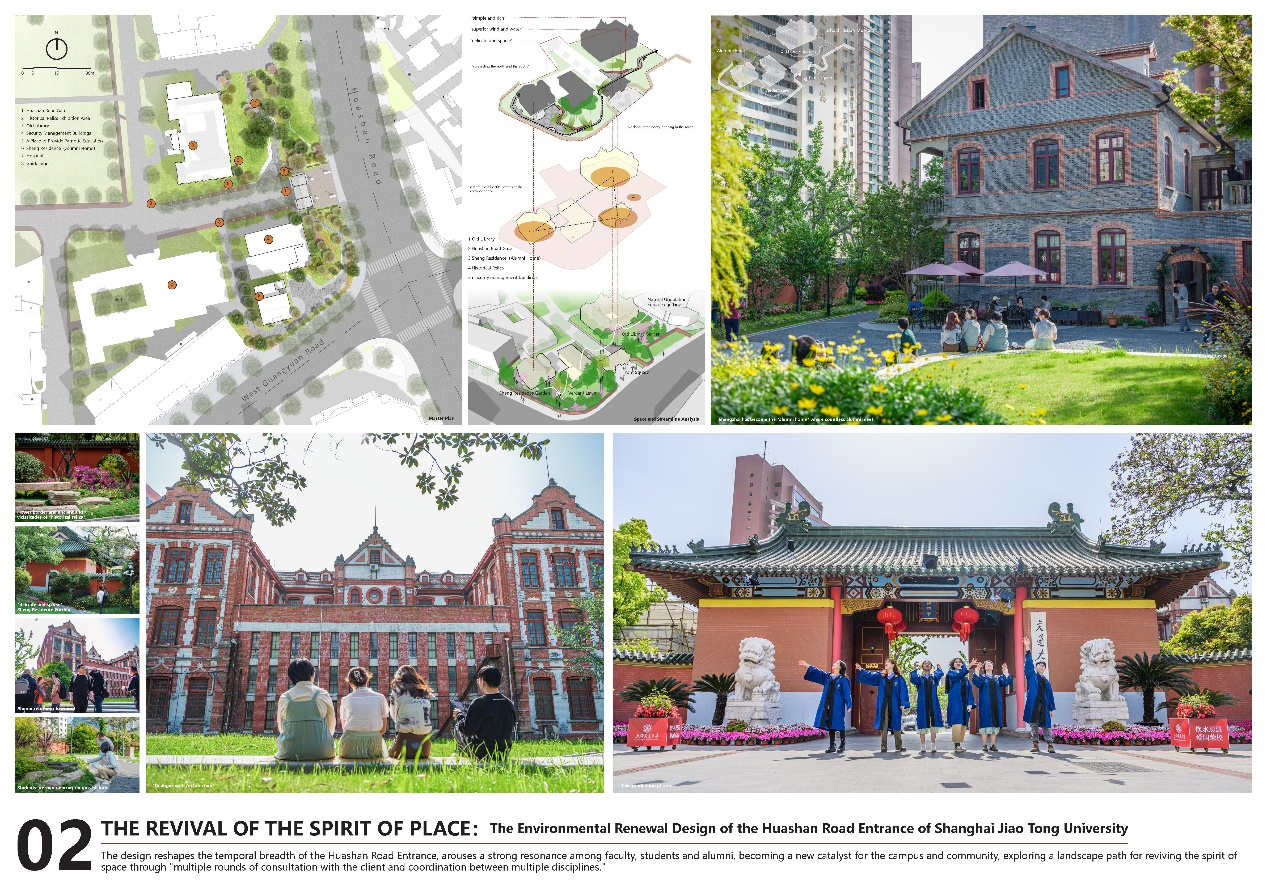
The project is located in the southeast corner of the Xuhui Campus of Shanghai Jiao Tong University (SJTU), the "birthplace" of China’s Jiao Tong universities. The Xuhui Campus initially served as the site of Nanyang Public School in 1896. The site’s "Huashan Road Gate", "Sheng Residence" and "Old Library" are among the eighth group of key nationally protected cultural units in China, and have witnessed the changes of Jiao Tong University over the course of a century. After a hundred years of exposure to the elements, the Huashan Road Entrance’s spatial structure has undergone significant alteration. In particular, residential buildings on its west side have severely damaged the tripartite spatial pattern of the century-old buildings. Through the preservation and renewal of historical architectural entities and spatial patterns, the inheritance and continuation of human history and living memory at the site, and the diversification and expansion of spatial functions, this design aims to reshape the Huashan Road Entrance space’s temporal expanse, and strengthen "first impressions" of the SJTU campus, so as to activate the Huashan Road entrance’s locational energy, and become a new catalyst linking campus and community.
Wetland Park Design Based On Flood Resilience And Ecological Intelligence
Parks and Open space
Award of Excellence
Main completion personnel of Shanghai Jiao Tong University:
Zhu Liqing, et al
Design unit:
The project is located in the Wuhan Economic Development Zone, Hubei Province, and is the core area of the Intelligent Eco-City, bordered by the Chuanjiang River Second Road to the east, Chuanjiang River Road to the south, Tongshunhe Avenue to the west, and Managed Hill Road to the north, and close to the Three Kingdoms Culture Important Node Managed Hill and Dongjing River. It is an ecological demonstration area, wisdom demonstration area and greenway demonstration area of the wisdom ecological city. The design area is about 753,000 square meters, half of which is wetland.
The main content of the project is to protect water ecological sensitive areas such as rivers, lakes, wetlands, ponds and ditches, to give priority to the use of natural drainage systems and low impact development facilities, to achieve natural accumulation, natural infiltration, natural purification and sustainable water cycles of rainwater, to improve the natural restoration capacity of water ecosystems, to maintain good ecological functions in the city, to coordinate the balanced relationship between humans and nature, and to improve capabilities in the natural sciences and technology.
Ecological Restoration, Climate Resilience And Equitable Urban-Rural Development In Anshan Suburban Park From A Sustainability Perspective
Parks and Open space
Award of Excellence
Main completion personnel of Shanghai Jiao Tong University:
Zhu Liqing, et al
Design unit:
Shanghai Jiao Tong University and Shanghai Weimei Landscape Design Engineering Co., Ltd.
The project is located in the southern suburbs of Wuhan City, north of Anshan Township. It is about 47 km from the center of Wuhan. It starts from Zhang Zheng Lake in the east, reaches National Highway 107 to the west; south to Mafa Road. Anshan Suburban Park is an important natural resource in the city. The total planning area is about 39.3 square kilometers.
The park is designed and managed with a strong focus on sustainability and environmental protection. For example, a waste separation station was constructed in the park, which reduces waste discharge and pollutant generation. The park has also built a sewage treatment station and plant purification facilities, which can effectively reduce the discharge of pollutants and protect the environment. In addition, the park also improves the ecological environment and protects natural resources by planting vegetation, building wetlands, and constructing artificial reefs. These measures can increase the stability and sustainability of the park's ecosystem, while also improving the park's environmental quality and visitor experience. In conclusion, Anshan Country Park is a modern nature park that focuses on sustainability and environmental protection, and its design and management can serve as an example for future urban development.
If Ever The Cloud Knows
Art & Sculpture
Honourable Mention
Main completion personnel of Shanghai Jiao Tong University:
Zhang Haiao, Li Di, Xu Hang, et al.
Design unit:
School of Design Ao silently Studio, Shanghai Jiao Tong University, Jinmao, Huanhu Company, Beijing Yongyige International Exhibition Co., Ltd
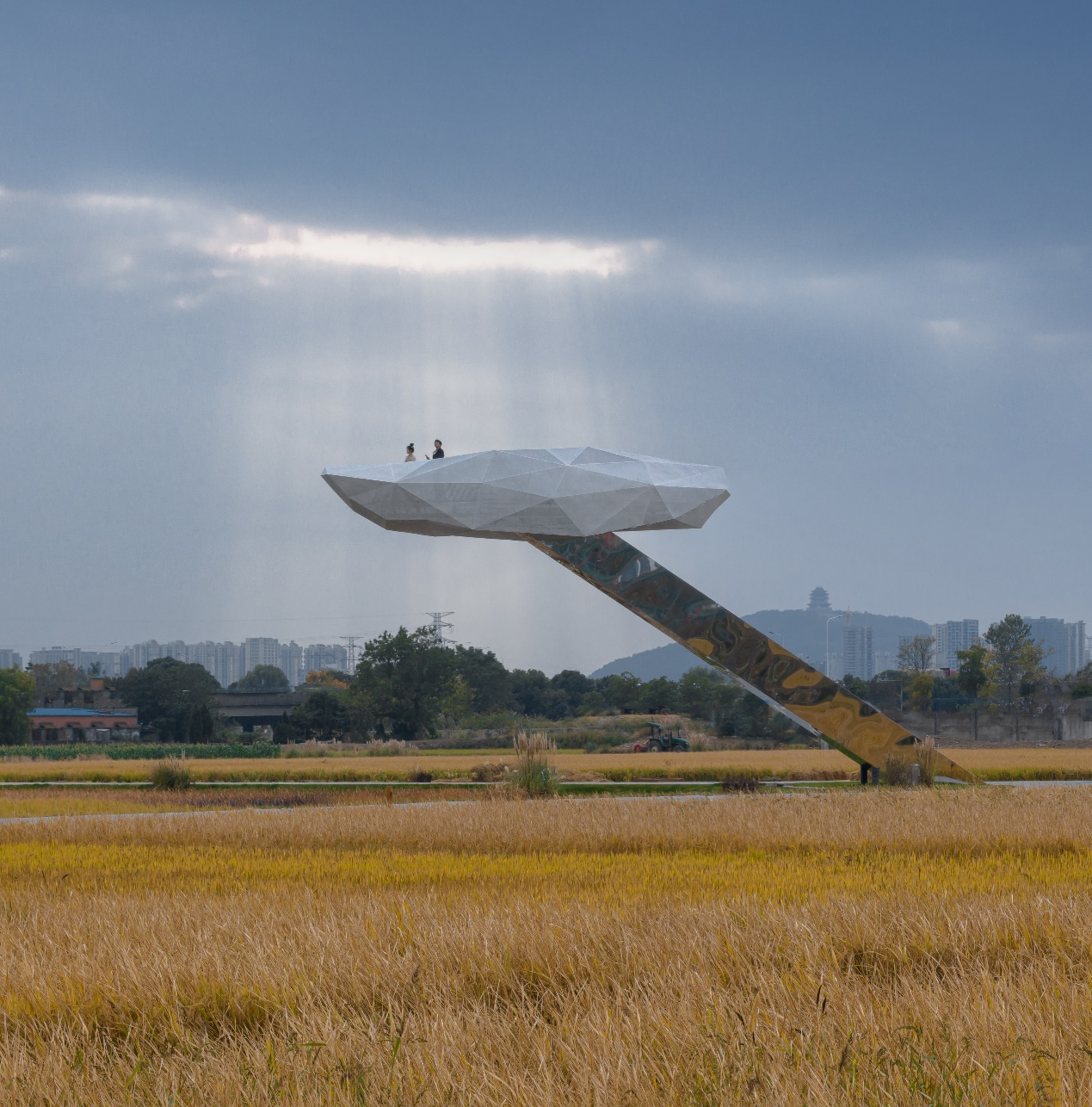
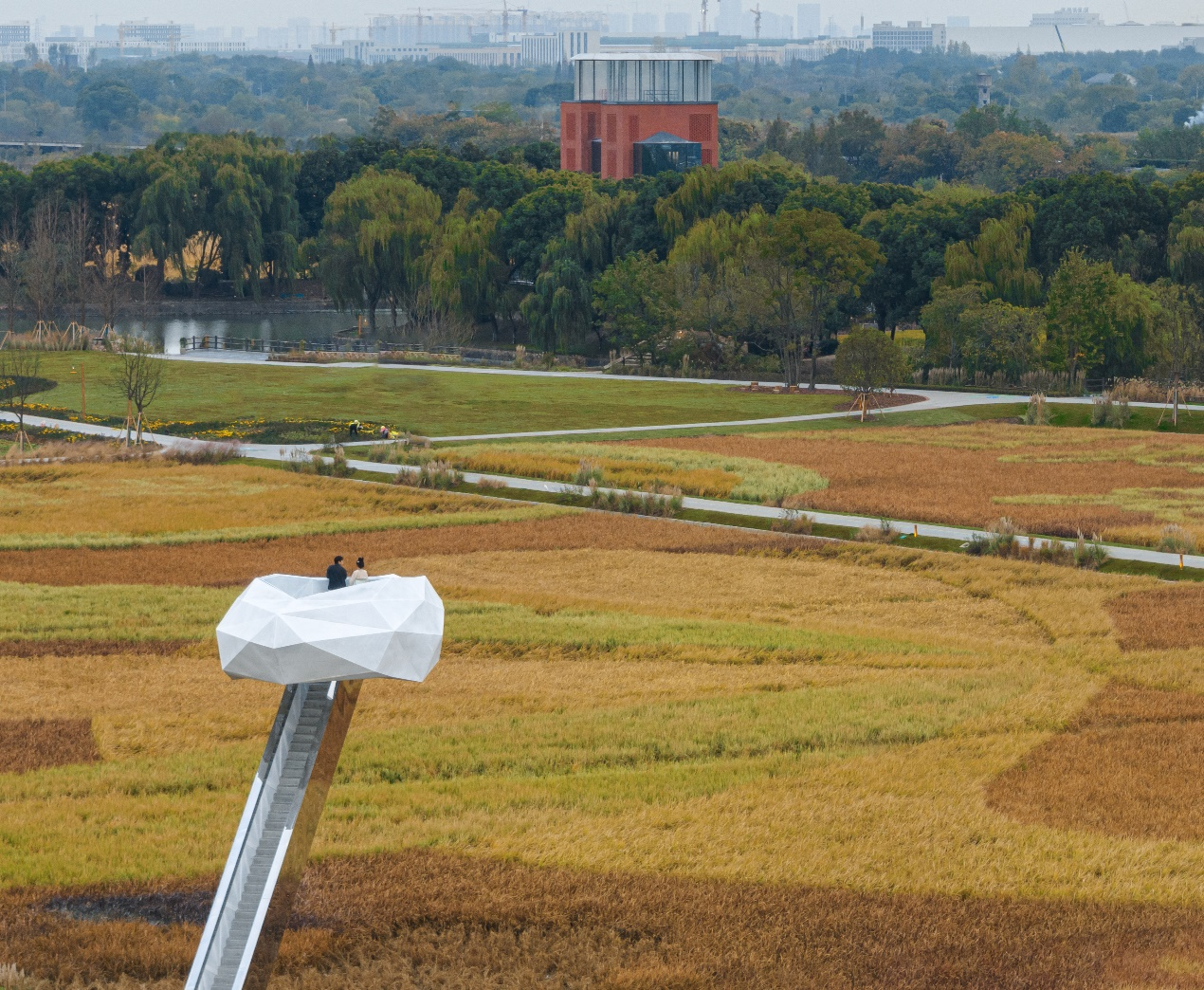
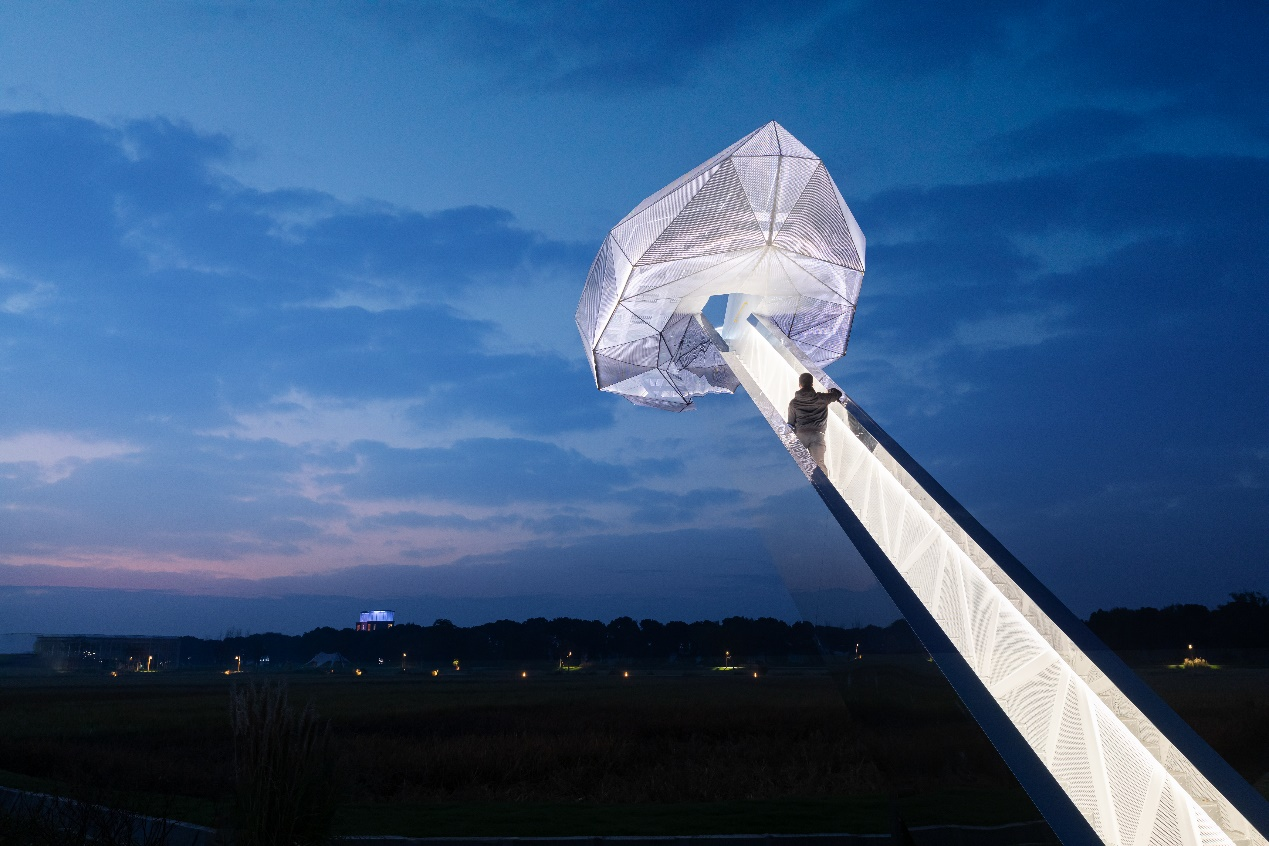



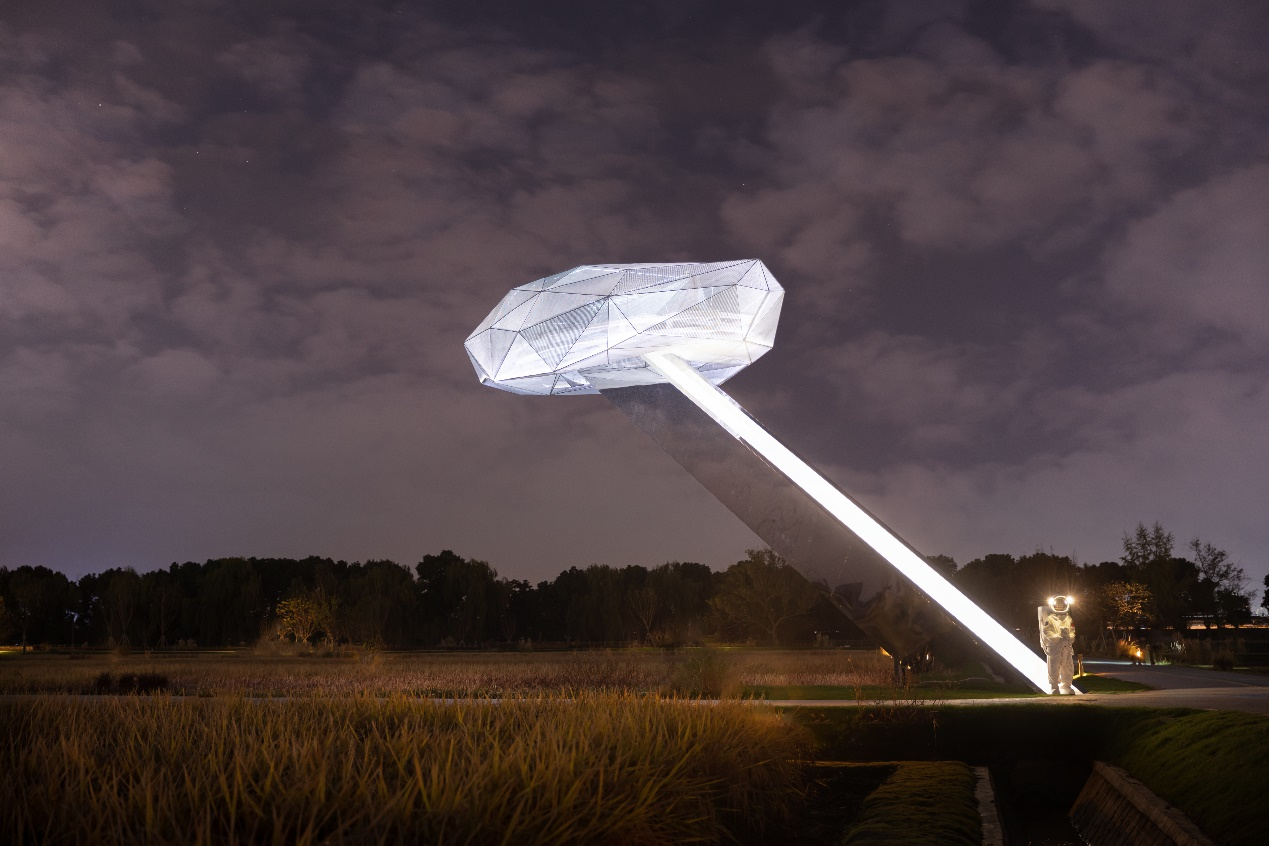
The device "If the Cloud Knows" stands in a simple form in the environment, with the cloud shape being a parameterized line shape, full of a sense of power. The white material is pure and clean, and the 12 meter long staircase overhangs straight into the sky. The moment a person reaches the top, it seems like they can feel the feeling of standing in the cloud. The use of triangle motifs in modeling emphasizes the power and impact of form. The structure of the landscape tower adopts a cantilever form, fully demonstrating the surreal floating feeling of mechanical components. The top platform of the cantilever is located in the center of the entire rice field, and the cloud shaped fully open view observation deck at the top is facing the landmark building in the skyline - Shuizha Bookstore. On the platform, tourists can experience different levels of natural landscape scenery through a 360 degree perspective.
An Exploration of the Pattern of Landscape Planning for the Jiangnan (South of the Yangtze River Area) Water Network Area of China from a Multi-scale Perspective: Renewal Planning of a Landscape System in Jiangyin City, Jiangsu Province
Parks and Environmental
Honourable Mention
Main completion personnel of Shanghai Jiao Tong University:
Tang Xiaomin, Wang Yun, Chen Dan, Zhang Le, Wu Wenchao, Lai Jiani, et al.
Design unit:
Shanghai Jiao Tong University and Shanghai EDGING A&LA Co., Ltd

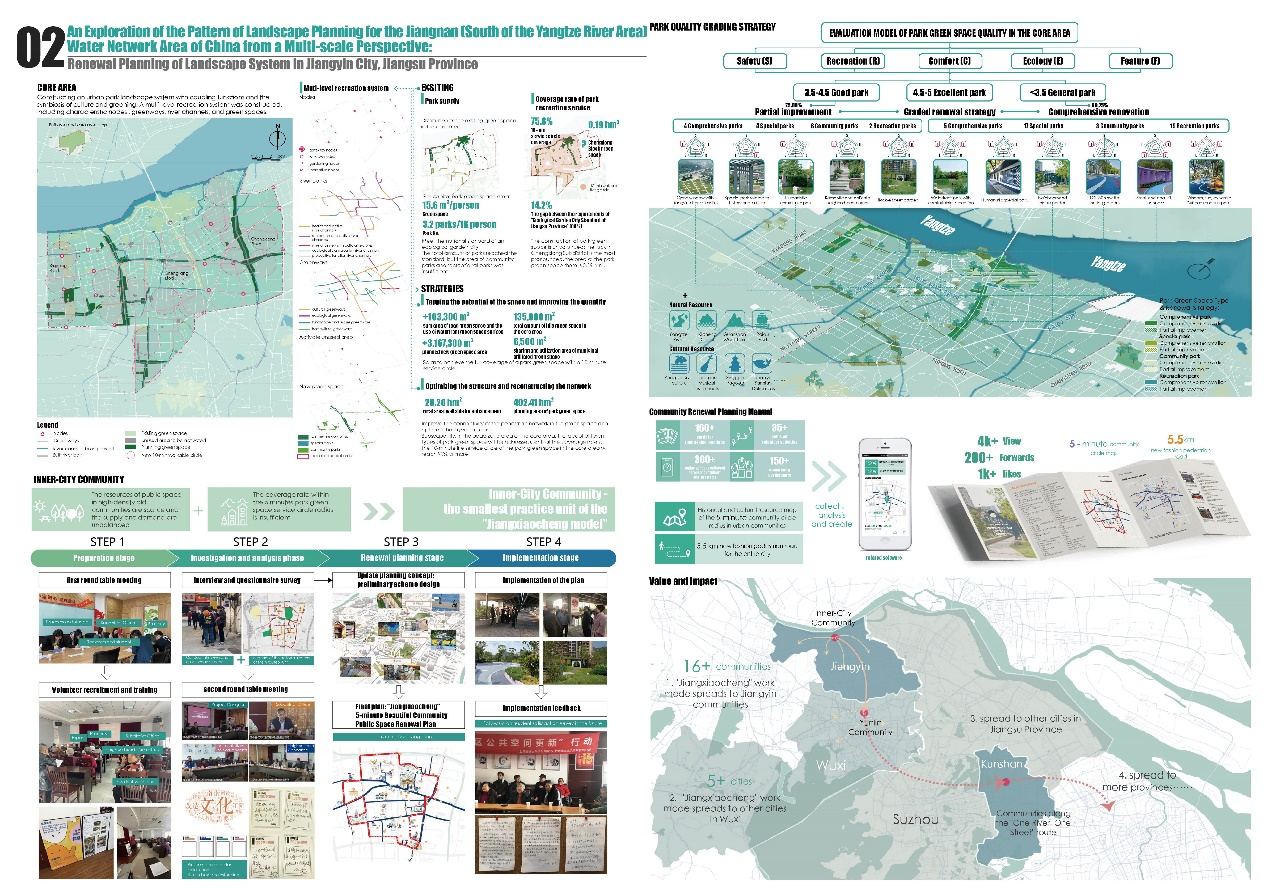
With the acceleration of urbanization, Jiangyin city in Jiangsu Province, a water network city in the southern part of China's Taihu Lake Basin, faces problems such as an imbalance of blue and green spatial structures, the loss of water texture and cultural memory, a lowered capacity for servicing the landscape recreation system, and an imbalance in the supply and demand of public space in old communities. In the context of territorial space planning, eco-city and community life circle construction, this plan constructs a "blue-green coupling" ecological network in the built-up area from the perspective of built-up area, core area and community. It builds a "park +" recreation service network involving the coupling of function, with culture and nature symbiosis in the core area, and creates a humanistic, accurate and refined 5-minute community green leisure network. Based on the coupling of three scales of planning, this plan forms the ecological and landscape system of Jiangyin city, involving the "interweaving of blue and green, connecting mountains and flowing water, and culture and nature symbiosis", thus exploring and forming an innovative mode of multi-scale landscape planning for Jiangnan water network cities.
Emerald Necklace in the Lake Cluster - A Study on the Construction of the Fourth Ring Forest Belt and the Assessment and Renewal of Plant Communities in Wuhan City
Green Infrastructure
Honourable Mention
Main completion personnel of Shanghai Jiao Tong University:
Zhu Liqing, Zhang Yang, et al
Design unit:
Shanghai Jiao Tong University and Shanghai Weimei Landscape Design Engineering Co., Ltd.
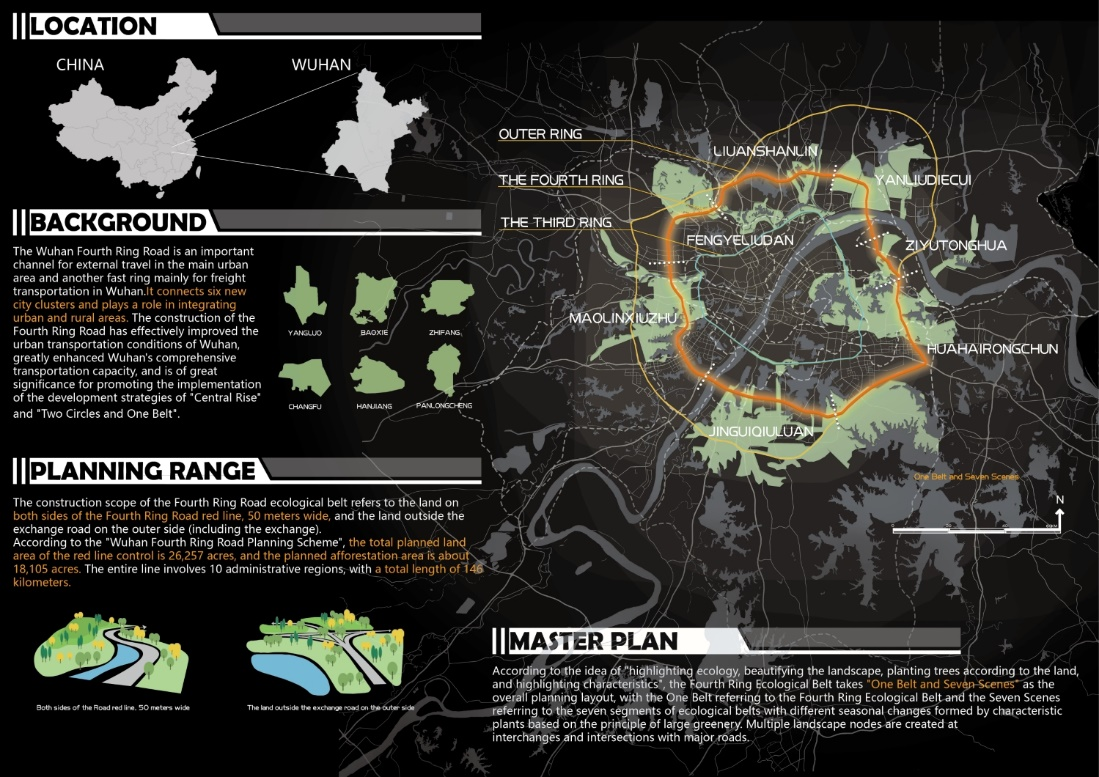
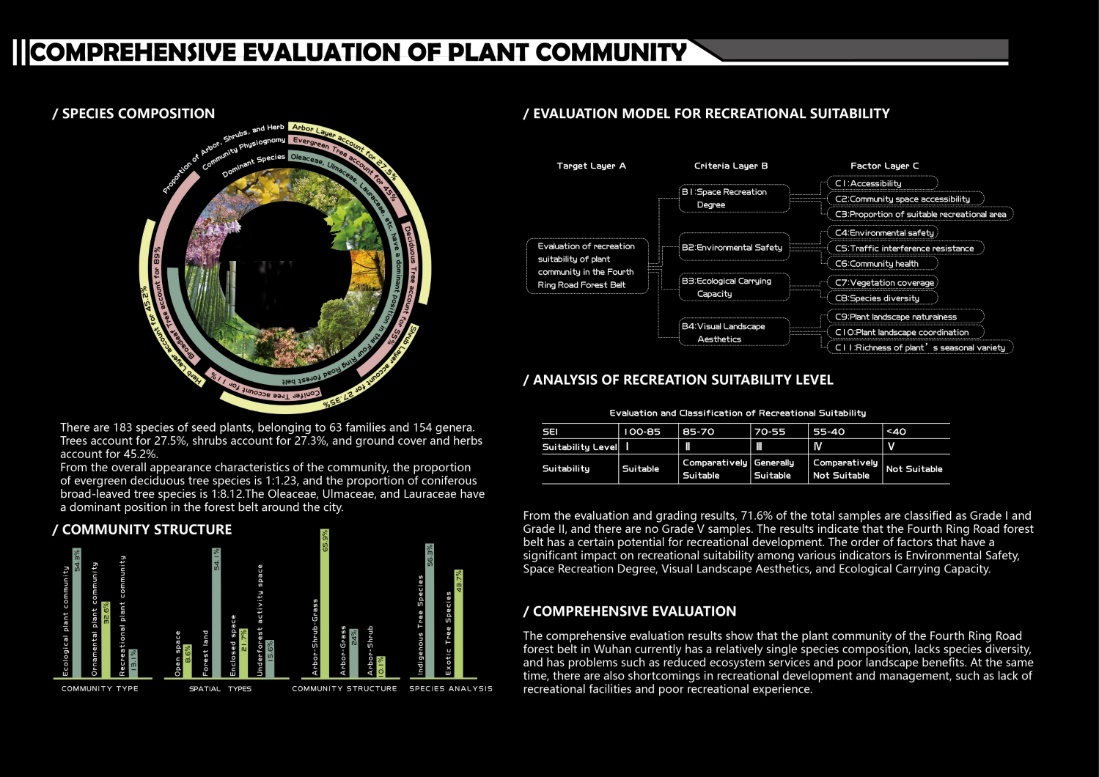

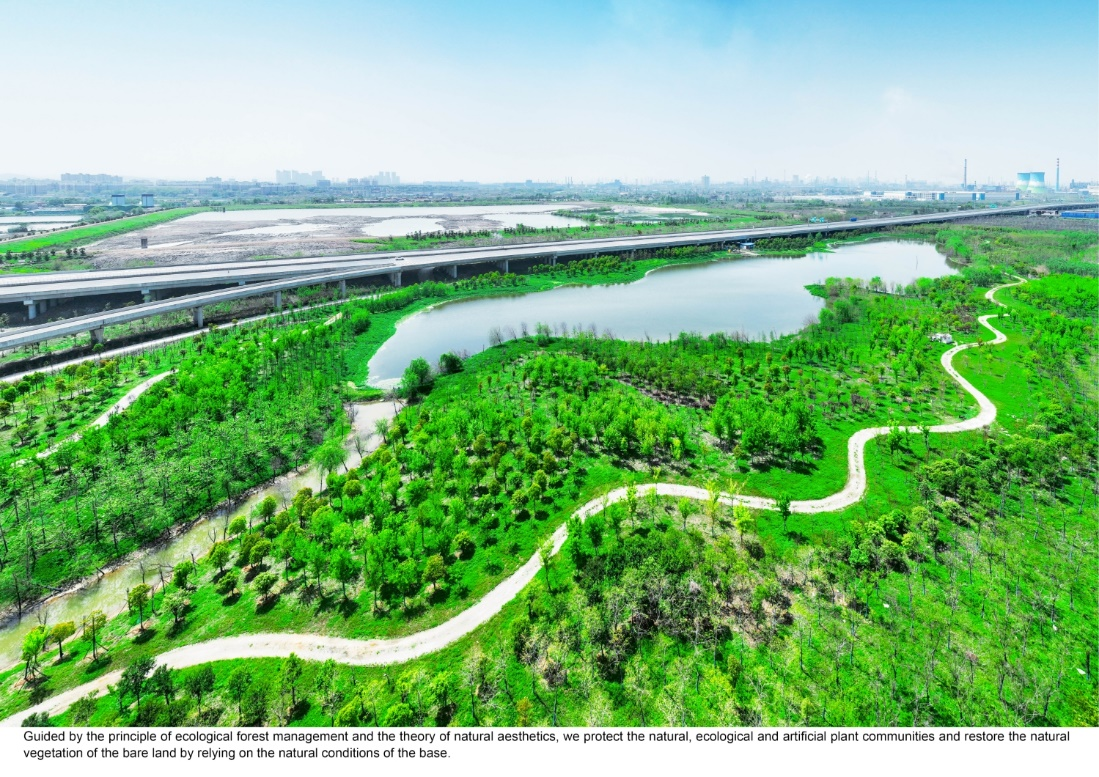
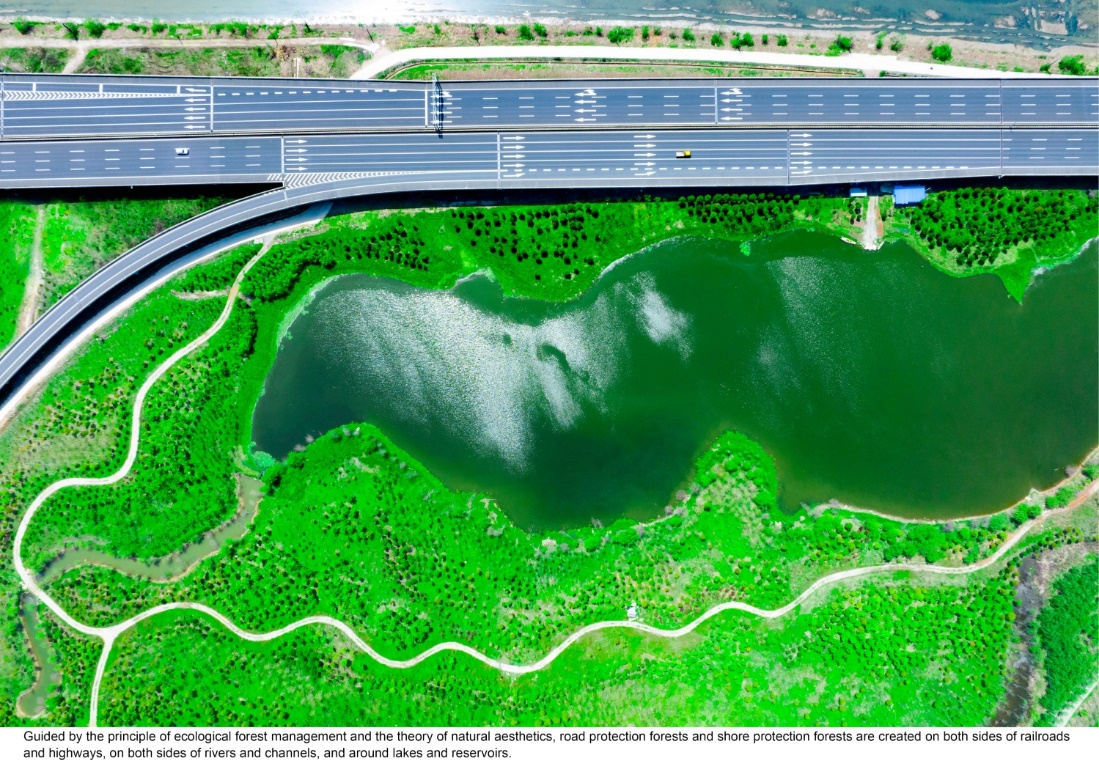

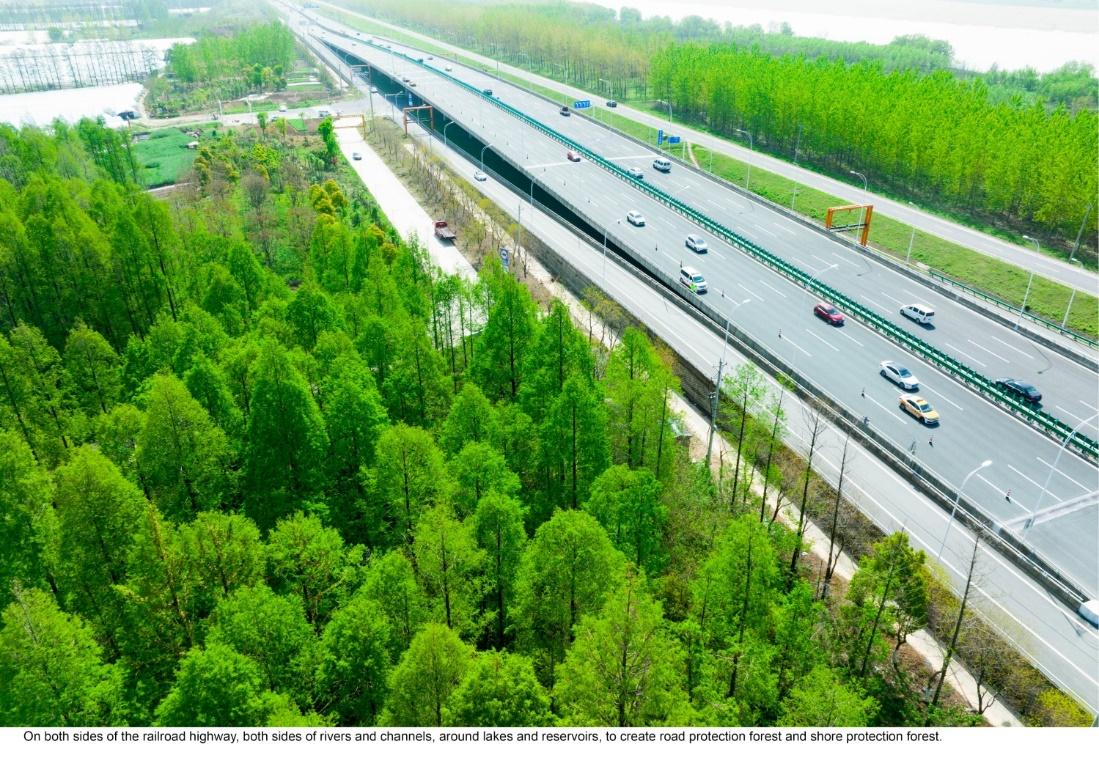
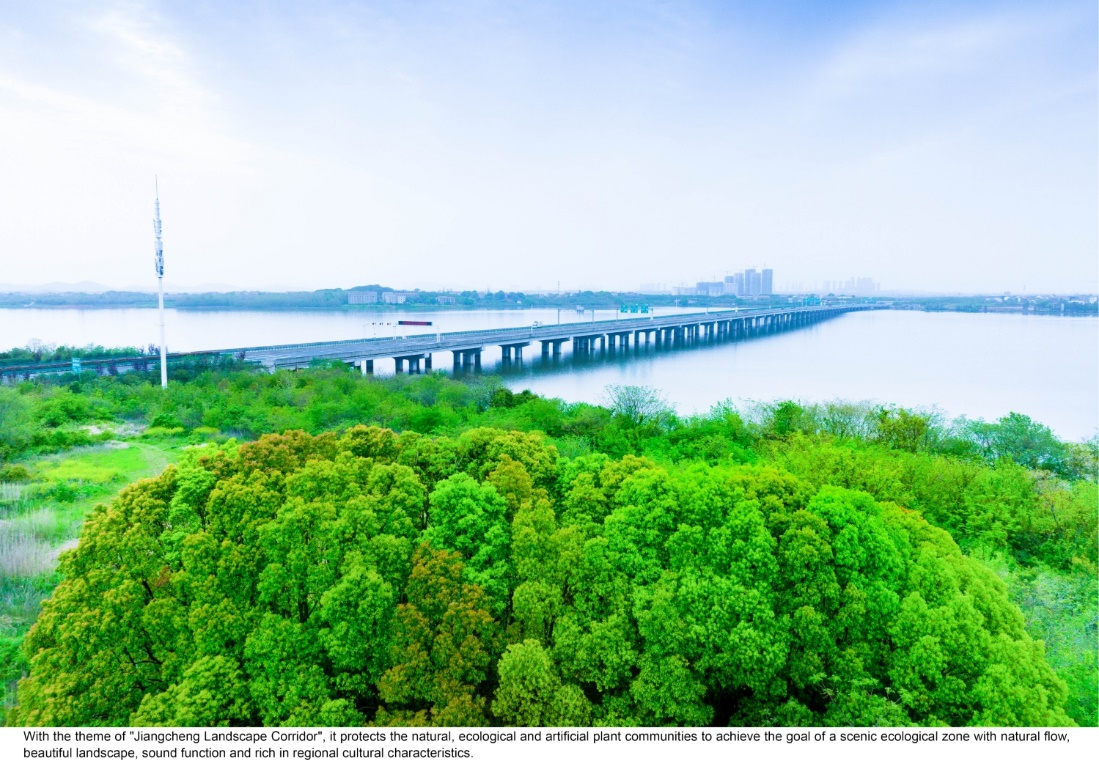
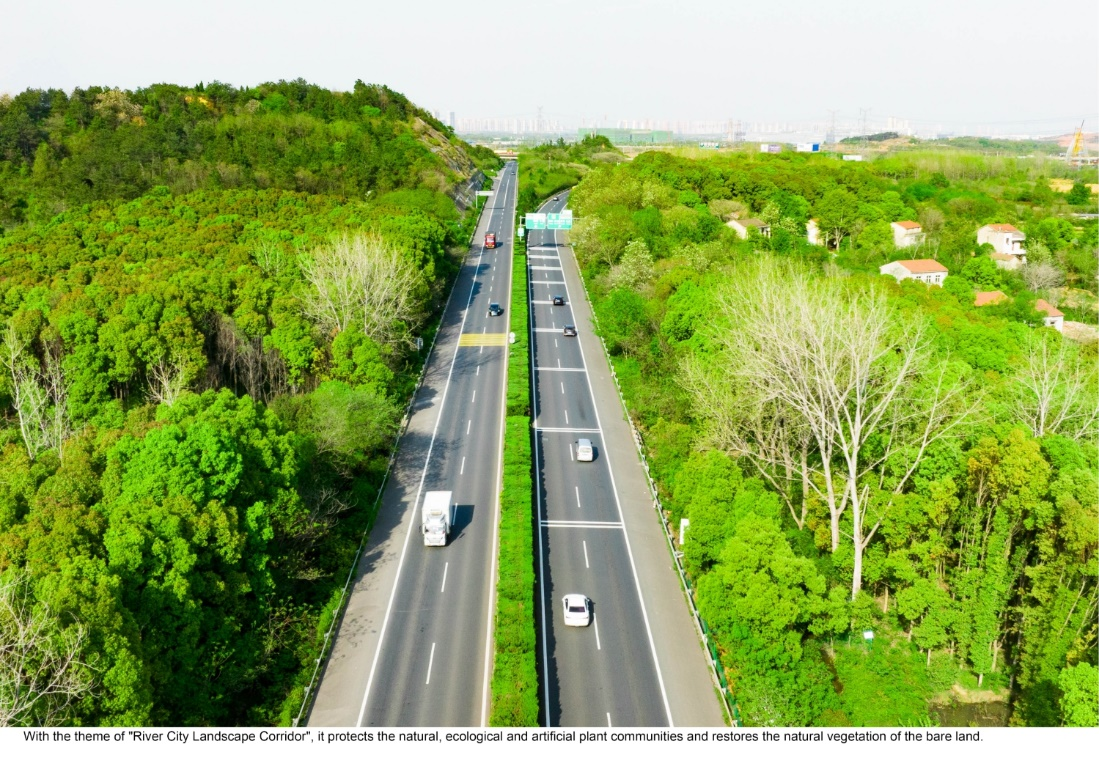

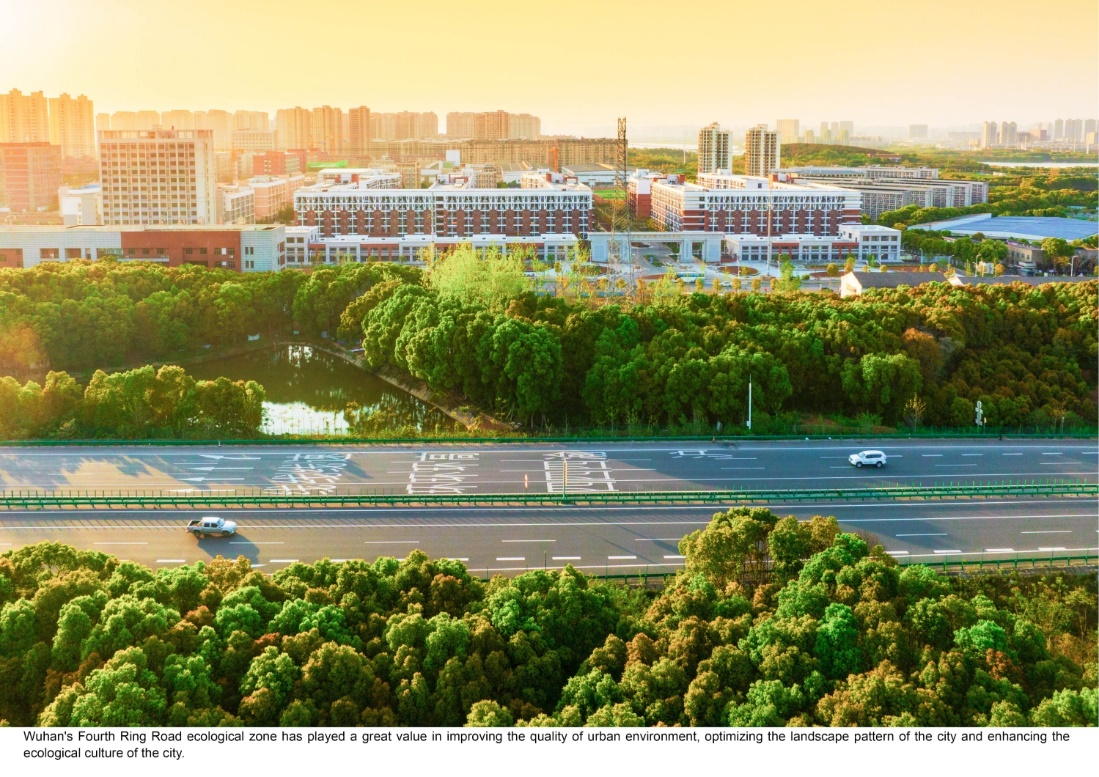
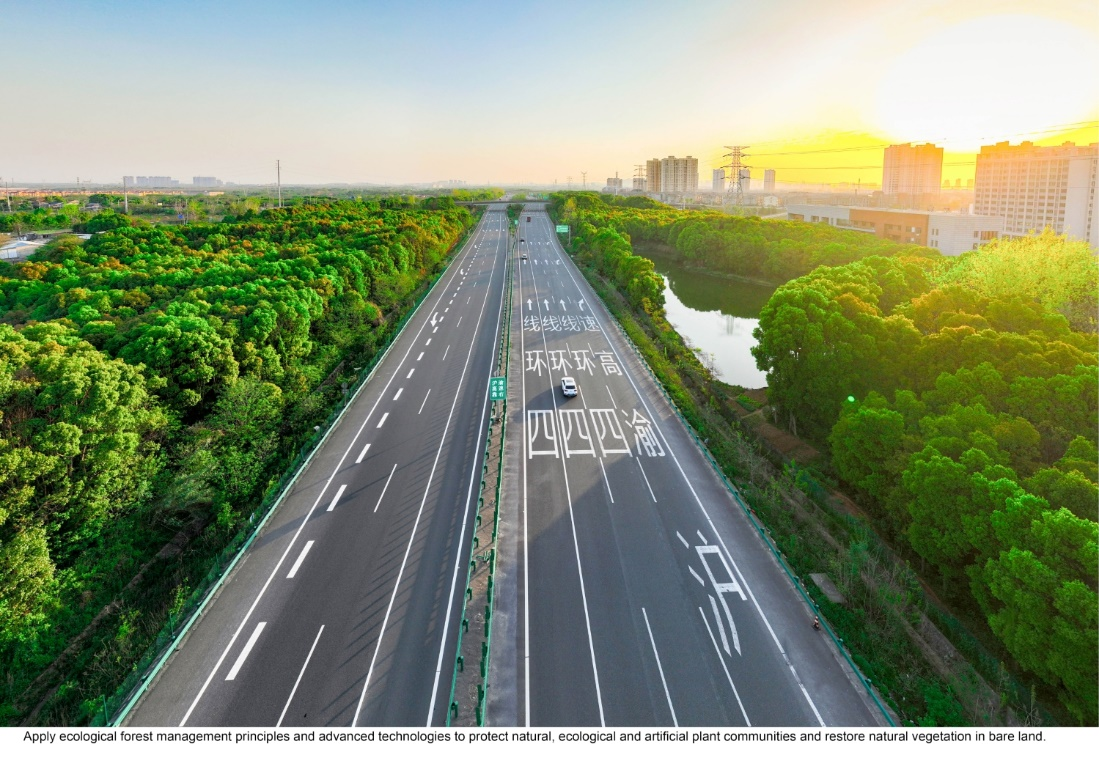
The Wuhan Fourth Ring Ecological Belt has played a huge role in improving the quality of the urban environment, optimizing the urban landscape, and enhancing the city's ecological culture. Based on research and analysis of the current situation of the site's road planning, terrain, topography, and ecological resources, this plan follows the idea of "highlighting ecology, beautifying the landscape, planting trees according to the land, and highlighting characteristics". The theme is "Jiangcheng Landscape Gallery", and it has planned the overall layout of the "One Belt and Seven Scenes" for the Fourth Ring Ecological Belt: the One Belt refers to the Fourth Ring Ecological Belt, and the Seven Scenes refer to the seven segments of ecological belts with different seasonal changes formed by characteristic plants based on the principle of large greenery. After the ecological belt is built, this case will continue to follow up and evaluate, propose a series of targeted plant community optimization strategies, and formulate specific recreational development plans and management measures combined with recreational development needs and environmental carrying capacity, aiming to protect the natural environment, improve recreational quality, and experience.
Sustainable Cultural Landscape Implementation Approach for the Living Room of a Coastal Water Town: Landscaping Design of CREC Century Shangcheng
Real Estate & Showflats
Honourable Mention
Main completion personnel of Shanghai Jiao Tong University:
Zhu Liqing, et al
Design unit:
Shanghai Jiao Tong University and Shanghai Weimei Landscape Design Engineering Co., Ltd.
Zhongtie Century Shangcheng is located in the Fengxian District of Shanghai, which is close to the East China Sea and its original inhabitants are mainly fishermen. The local culture is characterised by the figure of the sage, and the main building feature are water town lanes. Therefore, the landscape design of the community service centre is a landscape design with the theme of marine culture and the water town living room. The building is the community service centre, which is the living room of the community, replete with an underground car park. There is a large water surface around the original environment and it is close to the sea, so this design still adopts a large water surface and integrates marine culture in the design.
The principles of sustainable landscape design and ecological design are discussed in depth. Local culture and cultural sustainability are emphasised, and the local characteristics of the lilong architectural form are preserved; ecosystem protection is an important principle, achieved through the use of appropriate plants, soils and water treatment techniques; recycling and conservation is another important principle, achieved through the recycling and reuse of water, energy and materials; spatial layout and accessibility is the fourth important principle, achieved through the design of appropriate roads, trails and plazas; emphasis on movement and health is the fifth principle; and management and maintenance is the sixth important principle, ensuring the sustainability and aesthetics of the landscape through the use of appropriate management and maintenance strategies.
Award Introduction
The International Federation of Landscape Architects (IFLA) is the most influential academic organization in the international landscape architecture industry under the guidance of UNESCO, with members from 57 countries.
The IFLA AAPME Award is an international design award organized by the International Federation of Landscape Architects IFLA Asia Pacific, providing an international platform to showcase and promote the achievements and work of landscape designers in the Asia Pacific region. This award aims to work with like-minded partners and professionals to continuously enhance their understanding and recognition of landscape architecture, playing a crucial role in leading cities and the environment towards a better future. This award is divided into three levels and 21 categories; Each category has three levels: Outstanding Award, Award of Excellence and Honorable Mention.
Sourse from:https://designschool.sjtu.edu.cn/en-us/dynamic/news/detail/65a2a6ec705e3facdaebb51b